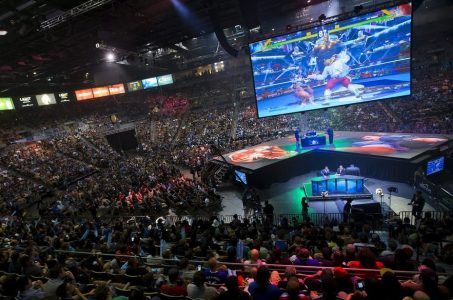‘Loot Boxes’ Not Gambling, Says US Video Games Regulator
Posted on: October 14, 2017, 02:00h.
Last updated on: October 14, 2017, 05:50h.
“Loot-boxes” have become a divisive issue in the video-gaming world in recent months but they do not constitute gambling, according to the Entertainment Software Rating Board (ESRB), the industry self-regulator.

These are the consumable in-game boxes that offer the player randomized chances to win more virtual items or skills.
They have traditionally existed as a form of monetization, typically for freemium mobile and social gaming, encouraging players to pay microtransactions for virtual goods.
But gamers are aggrieved at their increasing deployment within premium new releases. In this month alone, major new titles like Middle Earth: Shadow of War and Star Wars Battlefront 2 have employed loot boxes that require the player to make in-game microtransactions, despite the fact that the games themselves will set you back $60 to buy in the first place.
The Compulsion Loop
Loot boxes are designed to form a “compulsion loop” to keep players engaged, and financially invested, in the game and, as such, they have been compared to slot machines.
“ESRB does not consider loot boxes to be gambling,” said an ESRB spokesperson told Kotaku. “While there’s an element of chance in these mechanics, the player is always guaranteed to receive in-game content, even if the player unfortunately receives something they don’t want.
Several countries in Asia have already banned such mechanics under gambling laws and influential video-gaming YouTubers have been suggesting ESRB to do the same.
But with a lack of a stake involved, the organization believes the use of loot boxes cannot be classified as “real gambling” at all.
“We think of it as a similar principle to collectible card games: Sometimes you’ll open a pack and get a brand new holographic card you’ve had your eye on for a while. But other times you’ll end up with a pack of cards you already have.”
Adults Only
ESRB is tasked with rating the majority of video games published in North America. It uses letter grades, such as “M” for “Mature,” or “E” for “Everyone,” as well as offering brief descriptions of content, like “Blood and Gore,” “Nudity,” etc. It also distinguishes between “Real Gambling” and “Simulated Gambling” in its classification criteria.
“Real Gambling” must involve wagering a stake, which is classified as something of value that is being put at risk. “Simulated Gambling” is where the player “can gamble without betting or wagering real cash or currency.”
Any game that includes real gambling automatically receives an “Adults Only” rating and would be something the major games publishers would avoid as most retailers would not sell it in their outlets, the ESRB spokesperson said.
Related News Articles
David Baazov Forms New Global Investment Company
Wynn Boston Harbor Paying Top Dollar to Demolish Nearby Homes
Most Popular
Las Vegas Overstated F1 Race’s Vegas Impact — Report
Mega Millions Reportedly Mulling Substantial Ticket Price Increase
NoMad Hotel to Check Out of Park MGM on Las Vegas Strip
Most Commented
-
End of the Line for Las Vegas Monorail
— April 5, 2024 — 90 Comments -
Mega Millions Reportedly Mulling Substantial Ticket Price Increase
— April 16, 2024 — 8 Comments -
Long Island Casino Opponents Love New York Licensing Delays
— March 27, 2024 — 5 Comments
















Last Comments ( 2 )
Mike, I agree. And I hope _every_ _single_ _player_ stops playing games with loot boxes. Let's see what happens to industry :D
If you don't like games with loot boxes then don't buy games with loot boxes. How hard is that? I don't like baseball, but that doesn't mean I want them to stop it. I just don't watch. Why is this concept so difficult for some people?